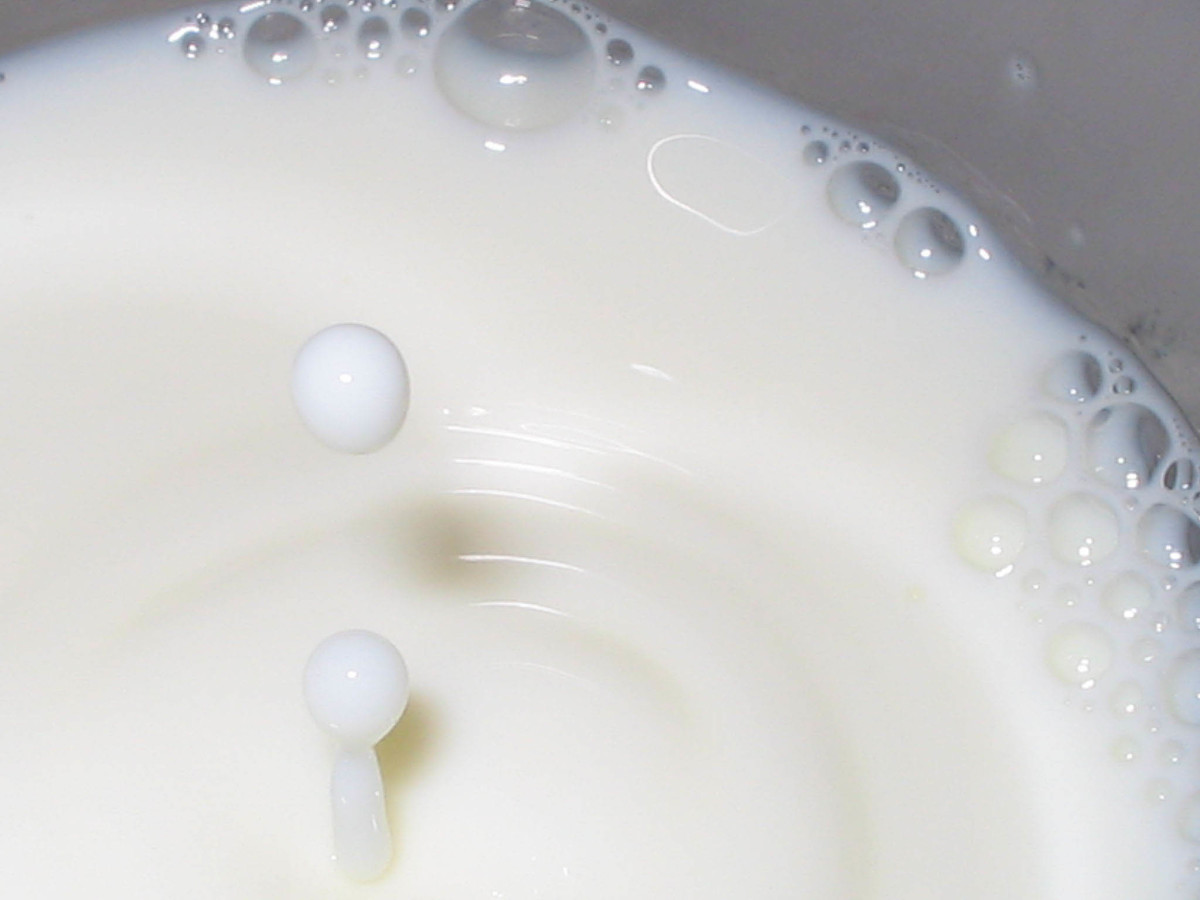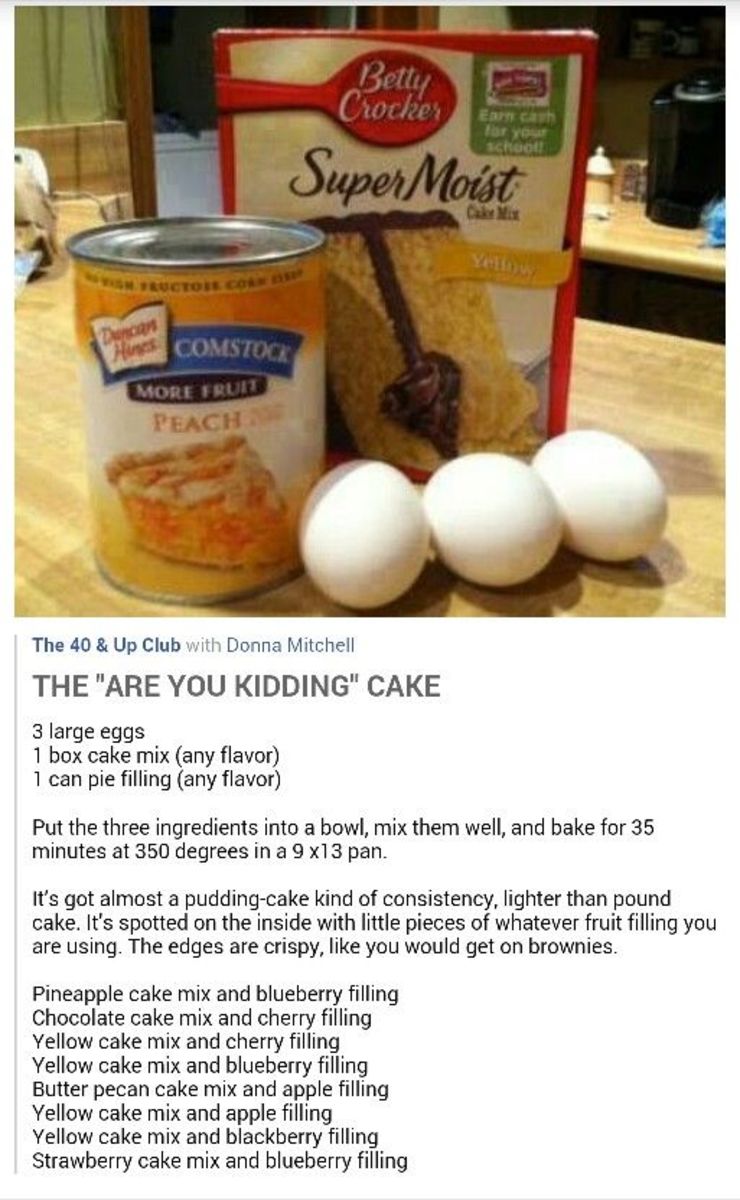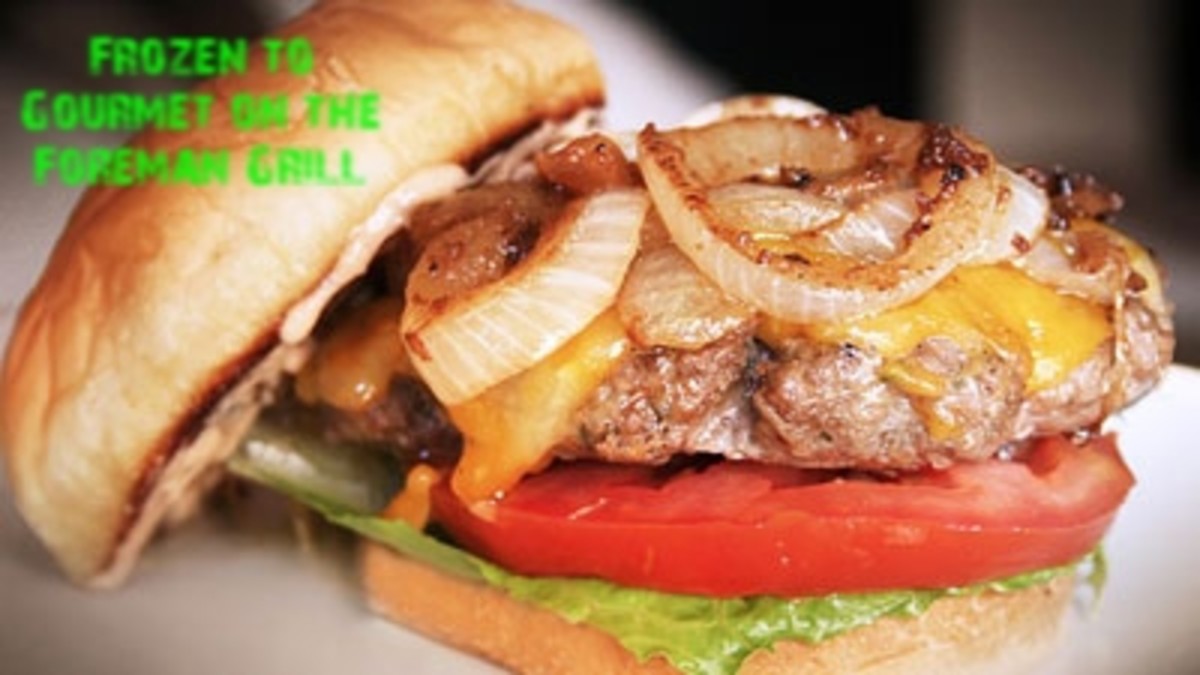Hot Peppers - Recipes for Sauces
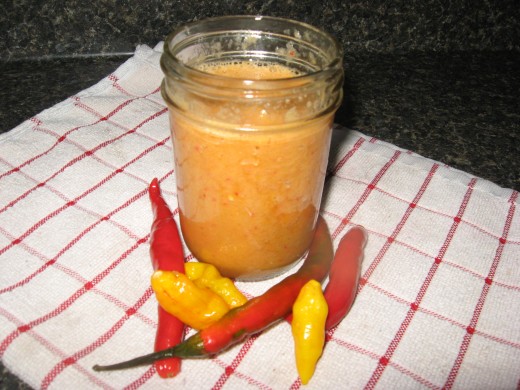
Hot Pepper Recipes
We like hot peppers, and I often use them in my recipes. I’m not really sure how I collected so many hot pepper recipes. It’s probably because I’ve grown so many of the hot little numbers over the years. I sure didn’t grow them just to look at, although they are nice and colorful. They’re also very easy to grow, and we always had a bumper crop. Obviously, we had to do something with all this bounty. Some of my creations have included chow chows, relishes, salsas, pepper vinegar, and a variety of hot sauces. My recipes for sauces usually contain more than just peppers and vinegar, as I often like some other flavors to compliment the inherent heat. In my condiments like these, I might include sugar, fruits, onion, garlic, and/or some mild peppers for another level of flavor. This weekend, someone gave us a bunch of hot peppers, so I had to remember my hot sauce recipes I’d used in the past. I made several recipes, and I can attest to the fact that my sinuses sure are clear. If you have some peppers that you’re not sure how to use, you might enjoy these hot pepper recipes.
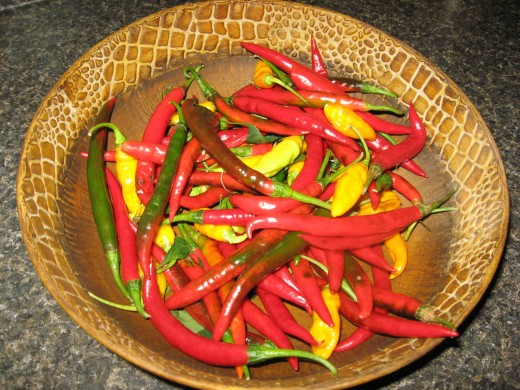
Hot Peppers
We usually grow hot peppers on our deck, but when we lived on a farm, we grew lots of them. We also grew sweet peppers and mild ones. Sometimes I felt like we had a pepper plantation! Some of the mild and sweet versions we grew include bell, banana, Poblano, cherry, and pimentos. The hotter versions have included jalapenos, cayenne, Fresno, Scotch bonnet, Serrano, Thai chili, and habaneros.
One year we decided to grow some really hot peppers – ghost peppers. At the time, the ghost pepper held the record for being the hottest on the planet, rated at 400 times hotter than typical Tabasco sauce. When the ghost peppers were ready to pick, I broke off the tip of one and barely touched it to my tongue. It set me on fire! I like some heat, but these things are insane. I like some flavor with my heat, and all these demons offered me was hellfire and brimstone. Needless to say, we never grew any more ghost peppers.
What’s really scary is that now there’s even a hotter variety. The hottest pepper in the world is now the Trinidad Moruga Scorpion. It’s twice as hot as the ghost pepper, according to the Scoville Scale. The ghost variety usually rates about one million on the Scoville Scale, but the Moruga Scorpion sometimes exceeds two million. WOW! In case you’re not familiar with the Scoville Scale, it ranks the hotness of peppers, according to how much capsaicin is in them. To give you a point of reference, jalapenos get only a 2,500-8,000 rating on the Scoville scale, and even the infamous Scotch bonnet gets a mere 300,000 or so. Compare that to the ratings of the ghost pepper and the Moruga Scorpion, and you’ll see that some peppers are just too hot for ordinary taste buds.
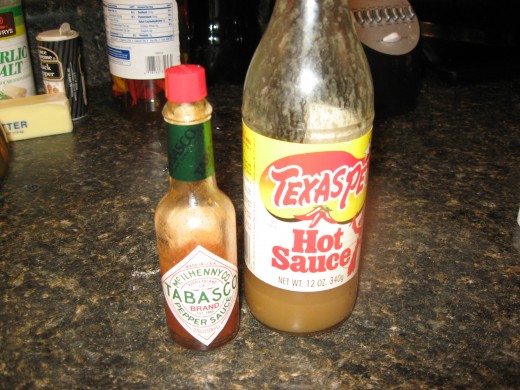
Hot Sauces
You’ve probably bought commercial hot sauces from time to time. If you haven’t actually purchased any of the sauces, you at least know about them. Some of the most popular hot sauces, at least in my region of the country, are Louisiana hot sauce, Tabasco Sauce, Crystal, and Texas Pete. Of these, the one used most often is probably Louisiana Hot Sauce.
Ever wonder what’s in this stuff, or how it’s made? The ingredients are simple – cayenne peppers, vinegar, and salt. Sounds super easy to make, right? Think again. Although the ingredients are simple and few, the process isn’t. The peppers are aged for at least twelve months before being processed into hot sauces.
My uncle used to make a homemade sauce that looked and tasted just like Louisiana Hot Sauce, and he always gave out bottles of it for Christmas. According to him, it was a pretty tedious process, and alas, he took his secret recipe with him to the grave. I’ve never tried to make this special sauce, although we buy plenty of it. It’s not expensive, and since it sounds like so much trouble to make, I find that it’s easier to buy.
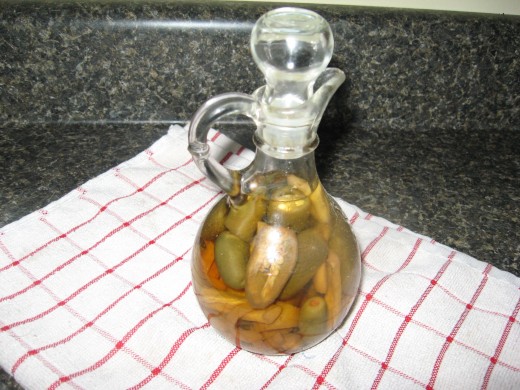
Hot Sauce Recipes
There are all sorts of hot sauce recipes you can make with peppers from your garden. They can range from warm to hot to fiery, depending on how many peppers you use and what varieties you use. Also, including the seeds in your recipes for sauces will make your concoctions hotter. If you prefer a milder condiment, remove all the seeds before processing your hot pepper sauce recipe.
When you’re making such fiery stuff, I advise wearing gloves when handling the peppers. Even after washing your hands several times, there can still be traces of capsaicin on your fingers, and if you touch your eyes, you’ll likely experience intense pain. Yes, I speak with the voice of experience. If the hot sauce recipes require cooking, you’ll get some pretty radical fumes, too. Open the doors and windows! Of course, this depends on just how hot the peppers are that you’re using.
And speaking of hot sauce recipes, what types of peppers should you use? Unless I’m making a very specific type of hot pepper sauce, I like to use a mixture of pepper varieties in my typical hot pepper sauce recipes. I find that this practice provides a more complex, more interesting flavor.

Hot Sauce Bottles
I’ve used all sorts of containers as hot sauce bottles. When I’m giving the hot sauces as gifts, I like to use Worcestershire bottles, soy sauce bottles, and teriyaki sauce bottles. Sometimes I put the vinegar sauce in small cruets. If the hot sauce or pepper vinegar is for close friends and family members, I’m not usually too concerned about the appearance of my offerings. I might use Mason jars, ketchup bottles, BBQ sauce bottles, vinegar bottles, mayonnaise jars, or whatever else I can find. Actually, clear plastic bottles like water bottles, green tea bottles, and Coke bottles work just fine. Of course, I clean the bottles well first, and I usually remove the original labels. Sometimes I make my own labels and glue them or tape them to the bottles I'm using. If the sauce is extremely hot, I’ll add a warning on my homemade label. By the way, I just design the labels on my computer and print them out.
If you really get into making hot sauces, you might want to buy some hot sauce bottles – bottles with very small openings that make dousing possible. These types of bottles are good for very thin sauces, but for thicker pepper sauce, you’ll need bottles or jars with larger openings because they’ll be too thick to pass through the tiny openings in traditional hot sauce bottles.
Hot Sauce Bottles:
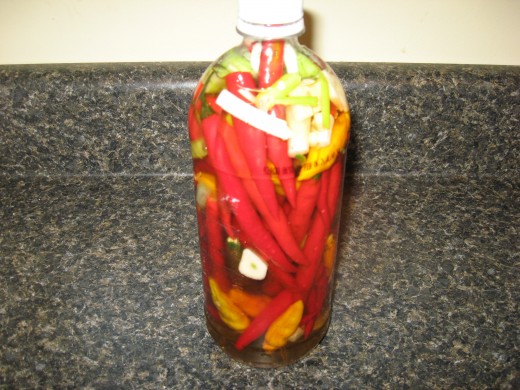
Pepper Vinegar
Pepper vinegar, or hot pepper vinegar, is what many of us southerners douse on our greens. It’s almost impossible to eat mustard greens, turnip greens, or collards without reaching for the vinegar. Most restaurants in the South that serve cooked greens on the menu keep a bottle of it on the table for their patrons. Pepper vinegar is super easy to make, and the vibrantly colored peppers are beautiful when displayed in clear bottles or cruets.
Ingredients:
Hot peppers
1 cup cider vinegar
1 teaspoon sugar
½ teaspoon salt
Directions: Rinse and dry peppers and remove stems. Pack peppers into a Mason jar or similar container with a lid.
Combine vinegar, sugar and salt and bring to a boil.
Pour over peppers, making sure all the peppers are covered with vinegar solution. Make more liquid if you need to – just use the same ratio of ingredients.
Close container and store pepper vinegar in fridge. Wait a week or two before using.
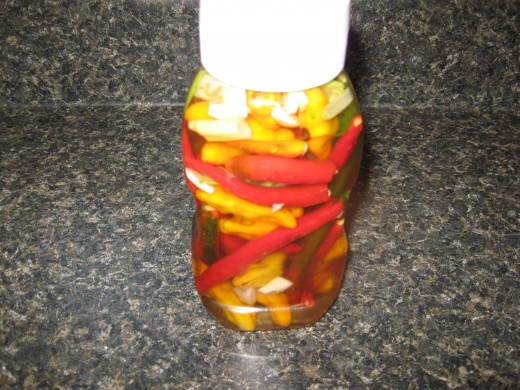
Hot Pepper Vinegar - with herbs
Ingredients:
Hot peppers (about one pint, loose)
2 green onions, cut into short sections
2 cloves garlic, sliced thin
1 cup white vinegar
1 ½ tablespoons sugar
1 tablespoon fresh chopped basil
1 teaspoon fresh chopped parsley
1 teaspoon salt
Directions: Rinse and dry peppers. Remove stems. Pack peppers, green onions, and garlic into a pint Mason jar or other type of jar or bottle.
Combine vinegar, sugar, basil, and salt. Bring to a boil. Pour over peppers. Close jar and store in fridge for at least two weeks before using.
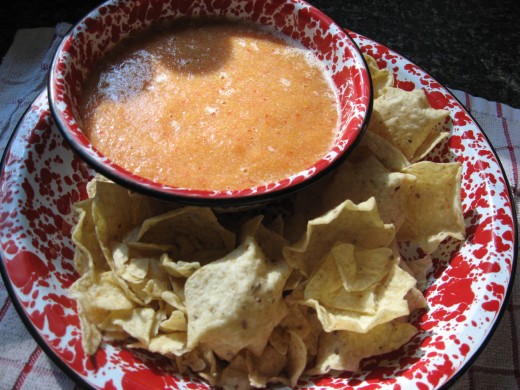
Pepper Sauce Recipes
Pepper sauce recipes are different than pepper vinegar recipes, although many folks use the two terms interchangeably. Generally speaking, hot sauce or pepper sauce recipes are more processed. In fact, some are fermented or aged, as I’ve already mentioned with the famous Louisiana Hot Sauce. Actually, I suppose any recipes for sauces in which the dominating flavor is capsaicin can be considered hot sauces or pepper sauces, so I don’t want to get too hung up on terminology here. I’ll put it this way: In my neck of the woods, pepper sauce can mean hot sauce, pepper vinegar, or any type of hot sauces made from peppers. Pepper vinegar, however, is always used to describe whole hot peppers that have been covered in a vinegar solution. In other words, pepper vinegar can be a hot sauce or pepper sauce, but not all hot sauce or hot pepper sauce is pepper vinegar. Got it?
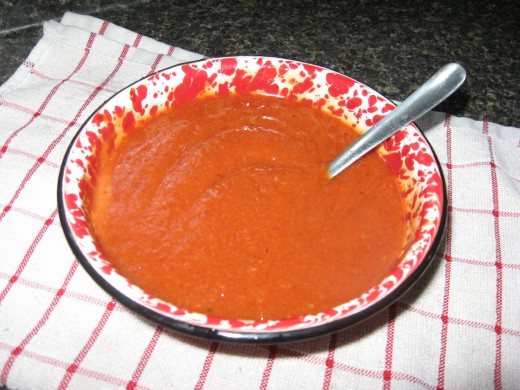
Hot BBQ Sauce Recipe
This BBQ sauce recipe is really tasty! It’s hot, it’s sweet, and it’s tangy, so it hits all the marks for a wonderfully hot BBQ sauce. The heat in your hot BBQ sauce recipe can be adjusted according to which peppers you use. For a really hot BBQ sauce, use Scotch bonnet or habanero peppers. For a milder heat, use cayenne or jalapeno peppers. Make this BBQ sauce recipe for chicken, ribs, or pork shoulder.
Ingredients:
10 hot peppers
½ cup water
1 tablespoon oil
½ cup chopped onion
2 teaspoons minced garlic
1 ½ cups ketchup
½ cup brown sugar
¼ cup vinegar
¼ cup lemon juice
2 tablespoons prepared mustard
2 tablespoons molasses
1 tablespoon Worcestershire sauce
1 tablespoon paprika
2 teaspoons Liquid Smoke
2 teaspoons black pepper
1 teaspoon salt
Directions: Wash and dry hot peppers and remove stems and leaves. Cut peppers into one-inch slices, retaining seeds.
Combine sliced peppers and water. Process in blender. Set aside.
Pour oil into a Dutch oven. Add onion and cook until soft. Add garlic and cook for one minute longer.
Add pepper mixture and all remaining ingredients. Bring to a boil and reduce heat immediately.
Simmer, uncovered, for 15 minutes. If BBQ sauce gets too thick, thin with a little water.
When sauce is cool, pour into large lidded jar and store in refrigerator.
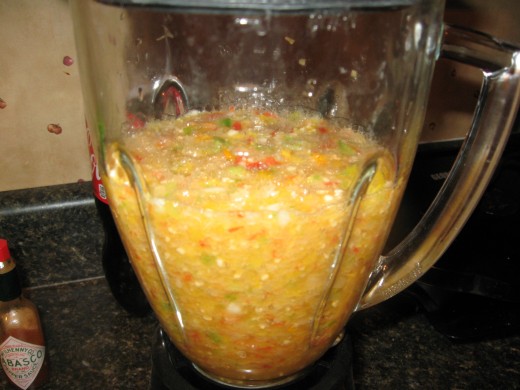
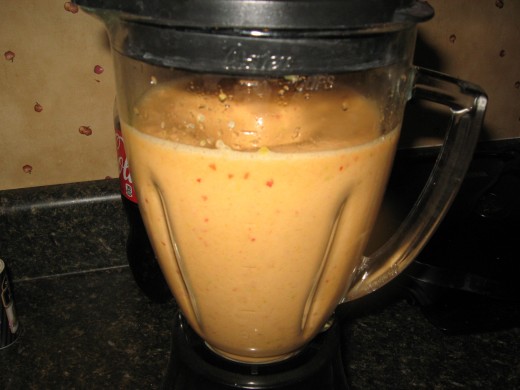
Hot Sweet Pepper Sauce - tropical style
This is a sweet pepper sauce that delivers plenty of heat. In my opinion, it’s the best pepper sauce on the globe! Sure, I’m biased. I created this hot pepper sauce recipe, so I included some of my favorite flavors. Heck, you might not even like it. I love it, though, and I could just about drink it straight from the bottle or jar. We eat it with tortilla chips, on chicken, and on pork. It's also tasty added to BBQ sauce.
Rate my Hot Pepper Sauce Recipe! Thanks!
Cook Time
Ingredients
- 10 Scoth bonnet or habanero peppers
- 5 cayenne peppers
- 1 cup apple cider vinegar
- 1 green bell pepper, seeded and chopped
- 1 red bell pepper, seeded and chopped
- 1 onion, chopped
- 1 mango, peeled and chopped
- 1/2 cup fresh cilantro
- 1 small can crushed pineapple, with juice
- 1/2 cup brown sugar
- 2 tablespoons orange juice
- 1 tablespoon lime juice
- 1 tablespoon sweet paprika
- 2 teaspoons minced garlic
- 1 teaspoon salt, or to taste
Instructions
- Rinse peppers and pat dry. Remove stems. Cut all peppers in half and place in blender.
- Add remaining ingredients to blender and liquefy until hot sauce is smooth.
- For a thicker sauce, reduce amount of liquids. For a thinner sauce, add more vinegar or more orange juice, depending on which flavor you prefer. For a less sweet hot sauce, reduce brown sugar.
- Pour hot sauce into jars and close. Store in refrigerator.






